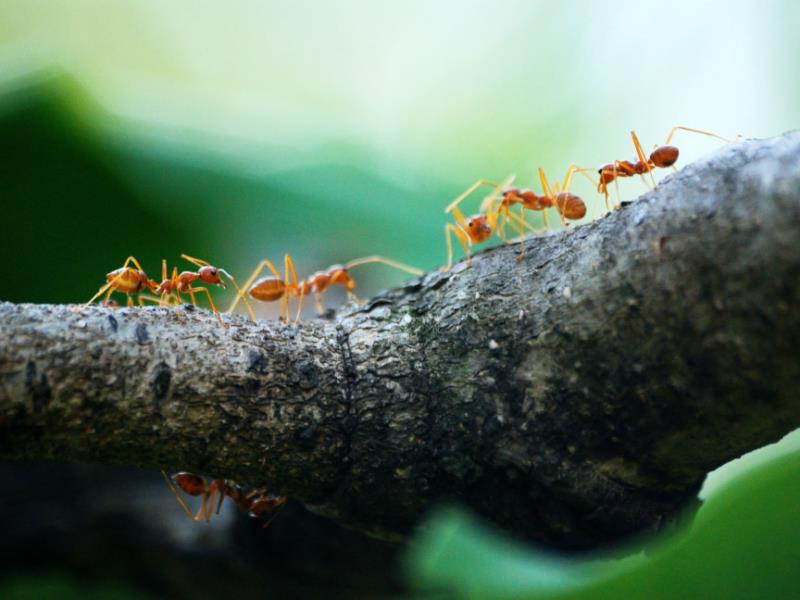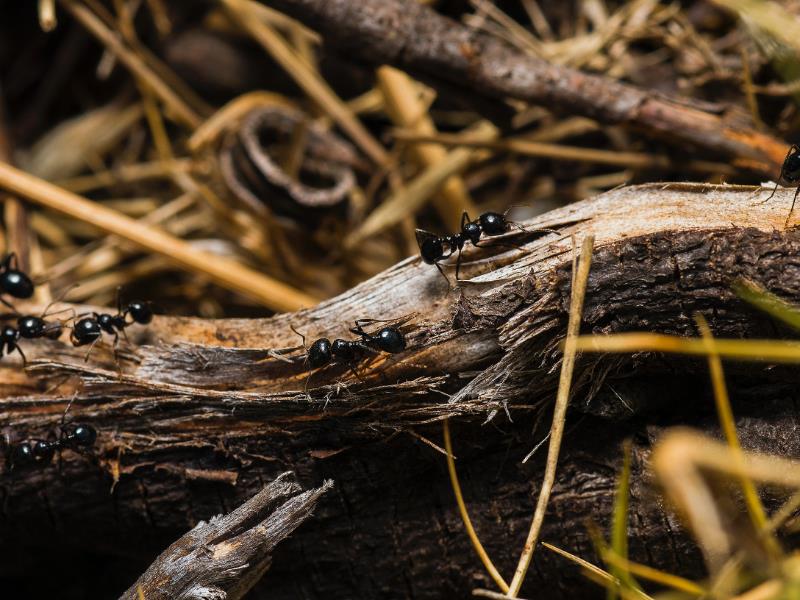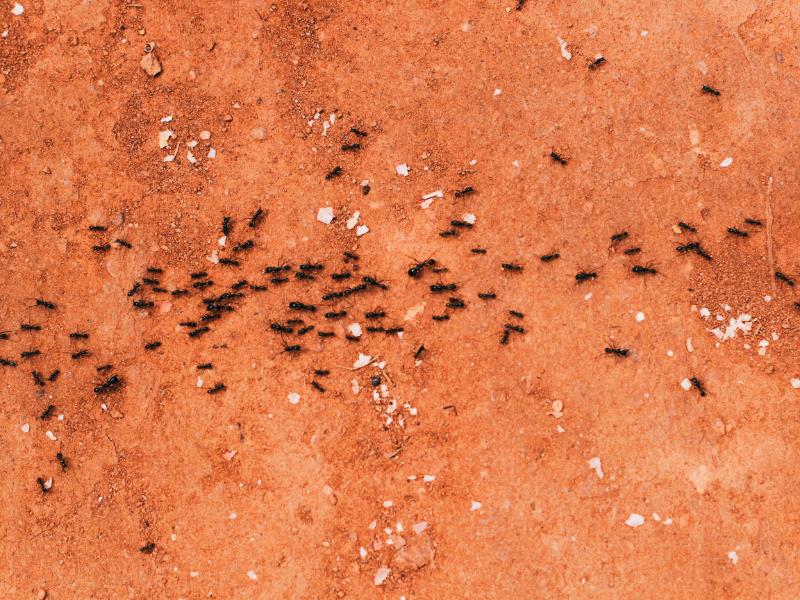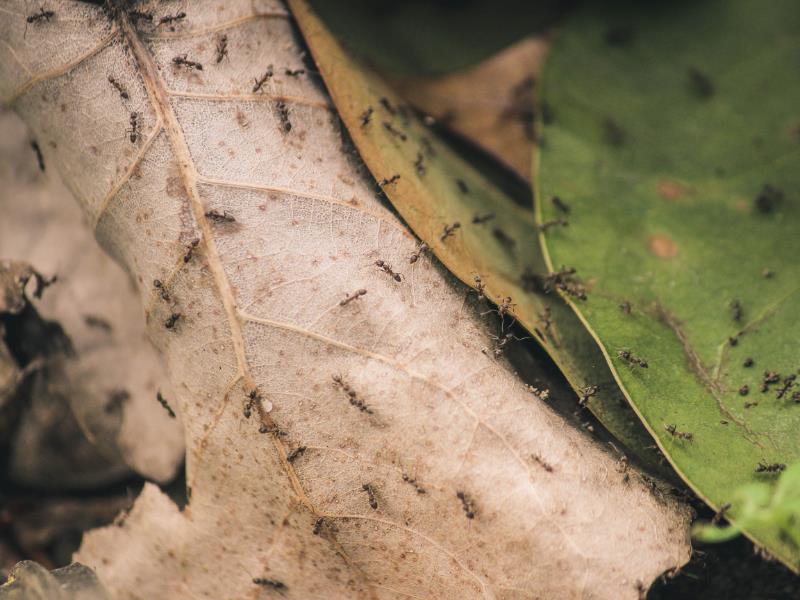What Is An Ant?
Ants are part of the order Hymenoptera, alongside bees, wasps, and sawflies, and are distinguished from their peers by exclusively forming the family Formicidae. There are a confirmed 1,275 species of ants found within Australia, though many scientists around the world believe we have only found about 50% of all ant species currently alive, meaning there could be as many as 2,550 species of ants here in Australia. The hardy ant can be found natively on almost every piece of land across the planet, with the exception of Antarctica (as is common for many insects) and a small collection of islands scattered around the ocean.

Brisbane ants preparing to search for food
What Do They Look Like?
Ants are immediately distinguishable from other insects via their two antennae, which are described as being geniculated, meaning they each have an elbow joint. The ant’s body is split into three distinct segments: the head, the mesosoma, and the metasoma, with a petiole forming a waist between the latter two.
An ant’s head is home to a pair of compound eyes, which are primarily designed to spot motion rather than detail. At the top of the head is a set of three simple eyes, and they provide the ant with relevant information about the level of light in the area, as well as the orientation of the light’s polarization. The antennae crown the head at its front, providing information about air currents, vibrations, and chemical composition. They can also be used by the ant to communicate with their peers via touch. Two strong mandibles are attached at the bottom of the head, which the ant uses to pick up and manipulate objects, perform construction, or act in self-defence.
The thorax of an ant, which forms a majority of the mesosoma, holds all
six of an ant’s legs as well as its wings, if it has any. Only
reproductive ants, both female and male, will have wings, though queens
will typically lose their wings once they have settled down to start
their colony.
The rear of the ant is the metasoma, largely consisting of the ant’s
abdomen, and this area of the ant is mostly home to internal organs,
including those critical to the respiratory, excretory, and reproductive
systems. Notably, however, some species of ant have evolved so that
their workers develop stingers instead of a typical egg-laying system,
which they will use to defend their nest and subdue prey rather than lay
eggs.

Ants move in a narrow file accross a log
When Are They Most Active?
Ants are typically active throughout the entire year, though they can enter varying states of hibernation if the weather becomes cool enough. In most cases, though, ants are constantly foraging for food, building their nests, and developing their colony. Via this cycle, a single ant queen can live for as many as thirty (30) years, though many of the workers will only live for one (1) to three (3) years.
How Do They Form New Nests?
Different ant species form their nests differently, with some being centered around a single queen, multiple queens, or no queen at all. Similarly, some species of ants prefer to build their nests in a stable location, while others will construct multiple temporary nests over their lifetime, with the colony routinely moving to a new location so that a new nest may be built.
Commonly, though, the formation of a new ant nest starts with the flight of ant alates. The winged male ants will mate with the winged female queens in flight, and the male will typically die in the process. The queen will then fall to the ground and shed her wings, where she will begin digging her new nest. She will lay eggs and will choose to fertilise some and not others, with the former becoming female ants and the latter becoming males. These ants will grow to fill their role in the colony, be it as worker drones, reproductive males, or foragers, and then, the queen will give birth to a new generation of alates, and the cycle will repeat.

A swarm of Brisbane ants scurrying about
What Risk Do They Pose?
Biting is a common defence of many ants, as is stinging, though neither is commonly fatal. One notable exception to that, however, is the jack jumper ant, native to Australia and commonly found in the southeast of the country as well as the state of Tasmania, though there is a viable antivenom that has been developed to protect against it. The bullet ant of Central and South America has the world’s most painful sting according to the Schmidt sting pain index, though their sting is typically non-fatal.
Is There Anywhere In Particular They’re A Bigger Threat?
With the resilient nature of ants, there are very few places on Earth one could travel to avoid them. However, different species can actually provide benefits to various ecosystems; for instance, the meat ant, commonly found in Australia, is an excellent choice for the control of toad populations, but they are an undesirable pest in urban environments. Generally speaking, though, ants are only a threat to humans if their nests are disturbed and they perceive a threat, so avoiding the threat of ants is as simple as avoiding stepping on their nests











